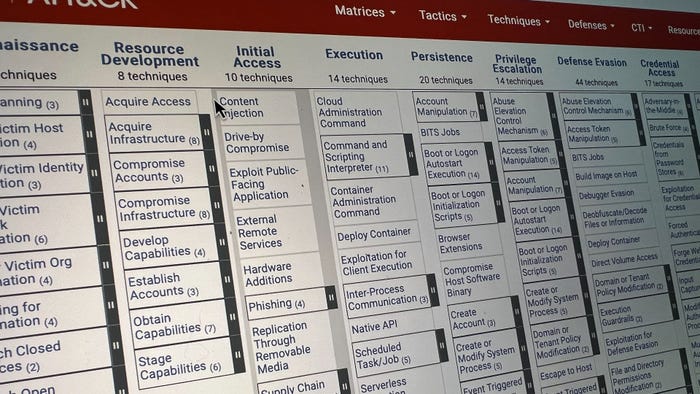New IPS Architecture Uses Network Flow Data for AnalysisNew IPS Architecture Uses Network Flow Data for Analysis
Can a stream of data intended for network performance monitoring be the basis of network security? One company says the answer is 'yes.'
July 23, 2019

Network control and management components communicate with one another through flows — information generated and collected in data's passage through the routers, switches, and other network components scattered throughout the network. Now, a company is putting flow information to a new use: protecting the network.
Netography has launched the open beta of a service it's calling Distributed IPS (Intrusion Prevention Service). The service uses multiple forms of flow data, including Sflow, NetFlow, and VPC flow, to analyze and act on network activity. "Switches, routers, and others are flow services," says Barrett Lyon, Netography's CEO. He explains that the flow data such items have generated traditionally has been telemetry data used for activities such as bandwidth management. "When we looked at it, you saw the you could use the information in there for other things," Lyon says.
Flow Begins
The first flow format was NetFlow, introduced by Cisco in the mid-1990s to allow network administrators to analyze traffic sources and destinations, along with performance conditions and congestion causes. Roughly a decade later, the technology entered the IETF standards process. The standards-based flow is known as Internet Protocol Flow Information Export (IPFIX). IPFIX is used by a number of different network infrastructure vendors.
There are other flow services on the market, many of them proprietary services supported by a single vendor. One notable exception is Sflow, which is supported by more than two dozen vendors, including several — such as Cisco — that also have their own, proprietary flow formats.
Distributed IPS can be used to act on network flow information in several ways. "There are four ways you can do stuff with flow data," says Lyon. "As we analyze it, we can trigger against different anomalies. That can go into an API that DevOps developers can develop actions around," he says, checking off the first two. "You can subscribe to your blacklist feed via BGP or BGP flowspec, or subscribe to one of the other blacklists," and then compare network traffic sources and destinations to the entries on those lists, Lyon continues.
Resolution Questions
Distributed IPS is able to detect distributed denial-of-service attacks, botnets, data extraction, login attempts, and other illicit network activity. The flows are collected and analyzed by Netography's cloud-based engine, with actions then taken through APIs available through Netography or developed by (or on behalf of) the customer.
There are observers, though, who have questions about whether the technology developed for network control can be adequate for security. "The challenge with NetFlow is that it is very low resolution," says Chris Morales, head of security analytics at Vectra, a company that uses artificial intelligence as the basis for its cybersecurity detection. "Think of trying to repaint the 'Mona Lisa' from a 1970s Polaroid photo. The resolution is too low to detect hidden threats with high efficacy."
Flow Actions
Lyon says that one of the bigger problems Distributed IPS is hoped to solve is more human-based than technological. "A lot of companies have developed their own orchestration layers similar to this, but many of those were developed by individual developers who then moved on, taking details of how the layer works with them," he says. That leaves the organization with a "black box" that can be difficult to update and impossible to patch or improve.
There seems little question that those black-box solutions can be less than perfect answers to security problems, and even off-the-shelf IPS products have wide differences in what they can provide for customers. “The usefulness, and thus the effectiveness, of current IDS/IPS technology varies greatly by vendor and rulesets," says Terence Jackson, CISO at Thycotic. "The idea of a Netography's Distributed IPS is intriguing, as it turns non-security appliances into a source of telemetry and threat intelligence. I think the idea could be a good one, but that depends on how the data will be used to work with current firewall technology on-premises and in the cloud.”
"The need for intrusion detection is absolutely real," says Morales. And he agrees that "NetFlow seems like an obvious fit due to its ability to scale for size." The question is whether the combination of flows that Distributed IPS ingests will provide the fine-grained resolution necessary for network security. The open beta period should help both Netography and its customers answer those very real questions.
Related Content:

Black Hat USA returns to Las Vegas with hands-on technical Trainings, cutting-edge Briefings, Arsenal open-source tool demonstrations, top-tier security solutions, and service providers in the Business Hall. Click for information on the conference and to register.
About the Author
You May Also Like


